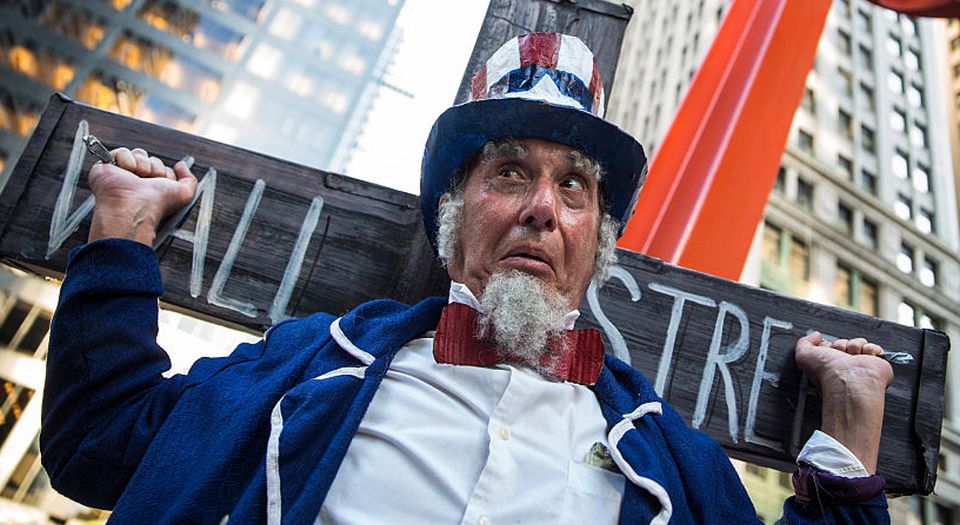
Long-read
On the self-loathing rich
The wealthy are not as avaricious as many think.
Want to read spiked ad-free? Become a spiked supporter.
Debating individuals who have a completely different mental picture of the world presents a fundamental challenge. That is, they differ not just in their political convictions or values, but even in terms of how they describe reality. There seems to be insufficient common ground even to start a discussion.
That is certainly the case in relation to the critics of the wealthy, or ‘the 1%’, as they are known nowadays. The rich are routinely portrayed as greedy, ostentatious and obsessed with status. Yet such caricatures, despite being so prevalent, are rarely grounded in actual observations, let alone systematic research.
Just to emphasise: the point here is not to take a political stand for or against the rich. It is deliberately more fundamental than that. The question is whether perceptions of the wealthy even serve as an accurate description of the reality of the wealthy.
Certainly my impression of wealthy people from my job as a journalist writing about economics and finance is that they are not the aggressive materialists so commonly portrayed. On the contrary, they generally seem at pains to come across not only as normal, but as morally worthy. They are a world away from the caricatured neoliberal plutocrats that so many of their critics seem to assume.
Of course, they may be on their best behaviour when meeting journalists. I have no way of knowing what they are like in private. But even the existence of such a yawning gap between their public persona and their real selves should be worth investigating.
From this perspective, Uneasy Street is an important book. It is an all too rare empirical study of how the rich see themselves. Rachel Sherman, an associate professor of sociology at the New School for Social Research in New York, did in-depth interviews with 50 parents in 42 households in the New York area. Their annual household incomes ranged from $250,000 (£190,000) to over $10million, while their assets ranged from $80,000 to over $50million.
Overall, Sherman’s sample size is relatively small, and confined to New York, but it is nevertheless valuable given the dearth of research in this field. She also supplemented her research by conducting 30 interviews with those who work with the wealthy, such as architects, art advisers, estate agents, interior designers and personal chefs.
Getting the rich to talk about their own wealth is notoriously difficult. They are extremely unwilling to be open on such matters. Sherman, by her own admission, benefited from having a similar social background to her interviewees. She has also gone to considerable lengths to disguise the identity of her subjects.
Sherman’s project is to discover how the wealthy see themselves rather than accepting the caricatures. She correctly observes that ‘the wealthy are often represented not only as status-seeking and lazy, but also as morally deficient in terms of personality and behaviour. Even relatively serious non-fiction books such as Richistan and Plutocrats reinforce this idea, even in their titles.’
Instead, Sherman found that her subjects felt highly conflicted in relation to their own wealth. They certainly had no intention of giving it up, but they struggled with the question of how to be worthy of their material privilege. They were desperate to see themselves as Good People, or ‘moral actors’, as Sherman calls them. Typically, they advocated diversity, openness and meritocracy rather than pursuing status based on material possessions.
Indeed, they tend not to see themselves as wealthy at all, but as middle class. That is not to say they failed to realise they had a lot of money relative to others, but that they nevertheless identified with what they saw as mainstream, respectable values.
A perhaps extreme exponent of this approach is Hillary Clinton, who in 2014 infamously said that she and her husband had been ‘dead broke’ when they left the White House. Yet whatever assets and debts they may have had in 2001 – and there is some dispute about this – the former president and first lady clearly had huge earnings potential. Apart from a generous presidential pension package for Bill, there were five-figure speaking fees, lucrative book deals, and consulting work for both of them. By 2016, it was widely estimated that they were worth over $200million. Yet, despite their great wealth, Hillary was still keen to identify with the middle class and speak out against the excesses of the rich.
Sherman identifies three ways in which the rich managed to square this circle and so manage to perceive their own wealth as legitimate. First, they were keen to emphasise that they worked hard, even if they often acknowledge there is an element of luck in their material advantage. They seize on whatever kind of work they did – paid, voluntary or domestic – to justify their wealth as deserving.
Secondly, the rich emphasised that their consumption is prudent. They were not against spending money in principle, but they are keen to view it as being spent in a sensible and frugal way – for example, on their children or on things that demonstrated high cultural capital. They viewed luxury items as exceptional and eschewed ostentation.
Finally, ‘giving back’ in some way was seen as important. This included both traditional philanthropy and volunteering, as well as an awareness of privilege.
Paradoxically, such awareness meant acting as if class differences did not exist. It involved observing a norm of silence in relation to material advantage. It also included – at least in the minds of the wealthy – treating others with kindness, respect and gratitude.
The flipside of this awareness of wealth was a tendency to criticise other rich people who were seen as not living up to these norms. For example, one of Sherman’s wealthy subjects describes the behaviour of other rich individuals in an exclusive seaside resort in New York:
‘Well, once summer hits [in the Hamptons], I can’t stand [it] – like, we don’t go out to dinner. We don’t really leave the house, other than going to the beach. Because the people are just awful, you know – too much money, spoiled. They hate locals. They’re rude to people that work in restaurants and everything, because they’re locals.’
Sherman’s carefully crafted observations of how the rich view themselves raise a difficult question. How can the caricature of the avaricious wealthy survive when it is so at odds with the reality of a highly conflicted group of individuals?
An important factor is no doubt the lack of class conflict in contemporary society. There are no existential challenges facing those with material privilege. Gone are the days, at least for the time being, when they are faced with the threat of political revolution or expropriation.
The climate of economic atrophy in the Western economies also plays a part. A dearth of growth in the developed world means there is an intense focus on how to distribute seemingly scarce resources rather than how to create more. This strengthens the idea that consumption has to be ‘responsible’. In practice, it means others in particular, rather than the wealthy themselves, are expected to constrain their consumption.
Under such circumstances, the divisions within the elite take on an outsized importance. The lack of a popular threat deprives them of a sense of purpose and encourages them to turn in on themselves. It is a classic case of what Sigmund Freud called ‘the narcissism of small differences’. There is a heightened sense of ‘us and them’ among the affluent rather than between them and the rest of society.
Creating and attacking caricatures of the errant rich has the added advantage of giving the wealthy a sense of mission. It allows affluent individuals to define themselves as progressive in contrast to those other, supposedly backward members of the rich.
In other words, there is a strange symmetry between the views of the wealthy themselves and those of their green-tinged critics. The sense of responsible consumption favoured by the rich is hard to distinguish from middle-class preoccupations more generally. Both sides are keen to attack the greedy rich as a kind of pantomime villain, presenting themselves as on the side of Good against Evil. Indeed, many of Sherman’s wealthy interviewees expressed affinity with Occupy Wall Street, which was in the news at the time she was doing her research.
Supposedly radical criticisms of the rich strangely reflect the inner turmoil of the rich themselves. Any meaningful discussion about the true significance of material inequality in contemporary society needs to start by thinking afresh.
Daniel Ben-Ami is a writer based in London. Visit his website here. An expanded version of Ferraris for All: In Defence of Economic Progress is available in paperback (Buy this book from Amazon (UK)
Uneasy Street: The Anxieties of Affluence, by Rachel Sherman, is published by Princeton University Press. (Buy this book from Amazon(UK).)
Who funds spiked? You do
We are funded by you. And in this era of cancel culture and advertiser boycotts, we rely on your donations more than ever. Seventy per cent of our revenue comes from our readers’ donations – the vast majority giving just £5 per month. If you make a regular donation – of £5 a month or £50 a year – you can become a and enjoy:
–Ad-free reading
–Exclusive events
–Access to our comments section
It’s the best way to keep spiked going – and growing. Thank you!






Comments
Want to join the conversation?
Only spiked supporters and patrons, who donate regularly to us, can comment on our articles.